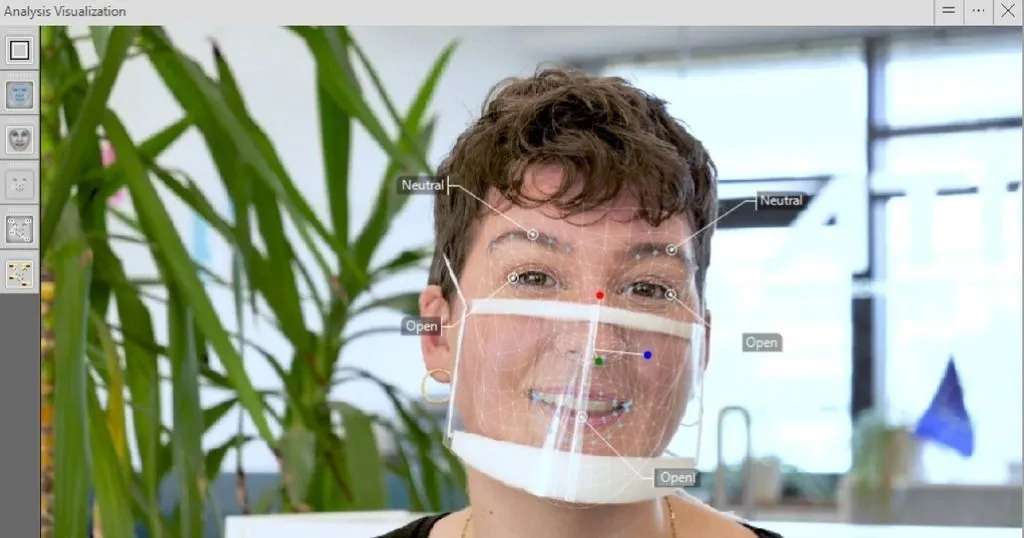How the ability to manage emotions shapes perception of risk
Can our ability to recognize and control our emotions determine how dangerous we perceive certain hazards to be and whether or not we think we are at risk?
Posted by
Published on
Wed 21 Dec. 2022
Topics
| Emotion Recognition | Emotions | FaceReader | Measure Emotions |

Contributors
Andrea Pittarello, PhD – Hofstra University, Frank G. Zarb School of Business
Enrico Rubaltelli, PhD – University of Padova, Psychology Department
Elisa Tedaldi – University of Padova, Psychology Department
Acknowledgment – Bhavana Surapaneni - Hofstra University, Frank G. Zarb School of Business
How the ability to manage emotions shapes perception of risk
Should you buy stocks or bonds? Should you quit your job to pursue a new one? How about purchasing flood insurance? In one way or another, we encounter these dilemmas daily. And although we want to think that we are rational decision makers (Ariely, 2008), it turns out that most of our choices are driven by emotions (Lerner, Valdesolo, & Kassam, 2015).
That is, we rush to buy flood insurance because we read a telling story about a couple who lost their property because of water damage. Truth is, the actual odds of this hazard in our area are almost nil. Similarly, we might install an alarm system just because someone broke into the apartment of one of our friends.
Do emotions influence risk perception?
Although there is enormous evidence that our emotions shape our reactions to different risks (see Lerner et al., Slovic et al., 2007), only recently did we learn that our ability to manage, recognize, and control our emotions matters, too. This concept is called Trait Emotional Intelligence (Petrides , Pita, & Kokkinaki, 2007).
In recent studies, researchers found that when feeling negative emotions, individuals who score lower on trait emotional intelligence are more likely to believe that a terrorist attack will occur in their city (which is very unlikely) and also to see outgroup members as dangerous (Rubaltelli & Pittarello, 2018; Rubatelli et al., 2020; Scrimin & Rubaltelli, 2021).
However, this research mainly relied on self-reported emotions. What happens when emotions are recorded implicitly and in real-time?

Automatically measuring facial expressions
Researchers in the behavioral research in business lab at Hofstra University and at the University of Padova have just begun to address this question. They brought participants to the lab and showed them pictures of different hazards.
Each picture remained on screen for 5 seconds during which FaceReader recorded facial expressions. After each hazard (there were 17 in total, e.g., car accident, wildfire, theft) participants reported how worried they were and their estimate that they would be exposed to each risk (0-100%).
FREE WHITE PAPER: FaceReader methodology
Download the free FaceReader methodology note to learn more about facial expression analysis theory.
- How FaceReader works
- More about the calibration
- Insight in quality of analysis & output
Trait emotional intelligence
At the end of the survey, the researchers administered the trait emotional intelligence scale. This questionnaire measures different facets of trait emotional intelligence. It describes our perceptions of our emotional world: what our emotional dispositions are and how good we believe we are in terms of perceiving, understanding, managing, and utilizing our own and other people's emotions.
What were the results? There was some evidence that participants with higher (vs. lower) trait emotional intelligence reported lower likelihoods of being exposed to the hazards, even controlling for how scared, surprised, and disgusted they were.
When looking at different facets of trait emotional intelligence, it turned out that people with higher (vs. lower) self-control reported lower likelihoods despite feeling sadness in response to the hazards. Similarly, people with higher (vs. lower) well-being were overall less worried even if they felt angry.
Finally, the researchers grouped the different risks in clusters (e.g., economic risks, medical, controllable). It turned out that for personal medical hazards (e.g., car accident, disease), people with higher (vs. lower) trait emotional intelligence, self-control, and sociability were overall less worried despite feeling angry.
Strengthening our emotion management skills
In sum, this preliminary (and ongoing) research tells us that not only do our emotions matter when it comes to our reactions to different hazards, but also (and perhaps more importantly) that the way we manage them play a big part. This finding replicates past research.
Obviously, more work is needed to draw conclusions given the preliminary nature and richness of the data. Clearly, not all hazards are the same: A promising future step is to classify different risks and explore if different emotions are at play when hazards are say caused by people, or uncontrollable.
From an applied perspective, this research also seems to suggest that strengthening our emotion management skills can help us keep cool and under control without the need to suppress the way we feel.
References
- Ariely, D. (2008). Predictably irrational: The hidden forces that shape our decisions. HarperCollins Publishers, 68-69.
- Lerner, J. S., Li, Y., Valdesolo, P., & Kassam, K. S. (2015). Emotion and decision making. Annual Review of Psychology, 66, 799-823
- Lerner, Jennifer S., Roxana M. Gonzalez, Deborah A. Small, and Baruch Fischhoff (2003). Effects of fear and anger on perceived risks of terrorism: A national field experiment. Psychological science, 14 (2), 144-150.
- Slovic, P., Finucane, M. L., Peters, E., & MacGregor, D. G. (2007). The affect heuristic. European Journal of Operational Research, 177, 1333-1352.
- Petrides, K. V., Pita, R., & Kokkinaki, F. (2007). The location of trait emotional intelligence in personality factor space. British Journal of Psychology, 98, 273-289.
- Rubaltelli, E., & Pittarello, A. (2018). Negative emotion and trait emotional intelligence in reaction to terrorist attacks. Personality and Individual Differences, 123, 247-252.
- Rubaltelli, E., Priolo, G., Scrimin, S., & Moscardino, U. (2020). Media Exposure to Terrorism and Perception of Immigrants as a Threat: The Role of Emotional Intelligence and Psychophysiological Self‐Regulation. Risk analysis, 40(8), 1666-1676.
- Scrimin, S., & Rubaltelli, E. (2021). Dehumanization after terrorism: the role of psychophysiological emotion regulation and trait emotional intelligence. Current Psychology, 40(6), 2707-2714.
Related Posts

Using facial expression analysis during a musical experiment

Why so angry? The role of context and function in facial expression analysis
